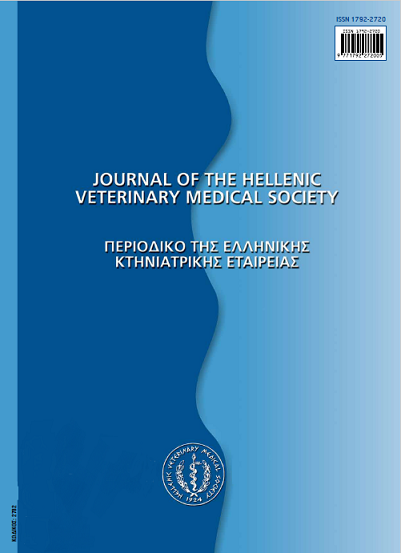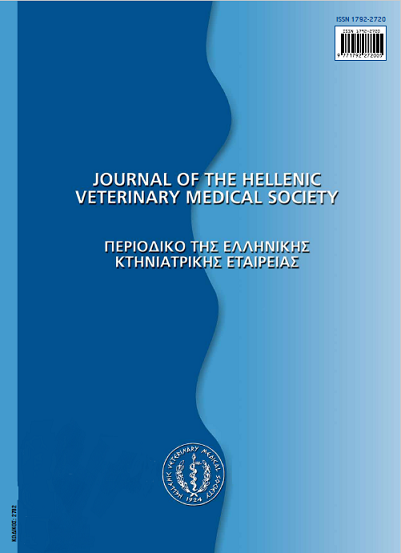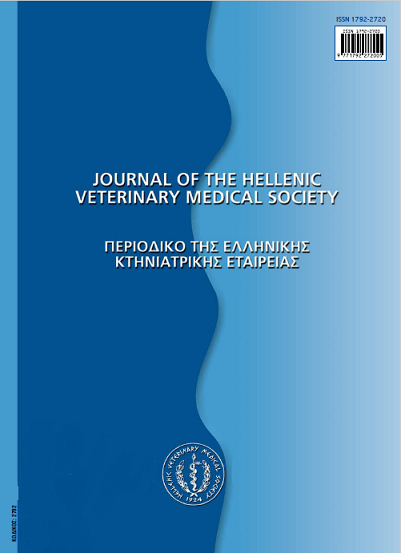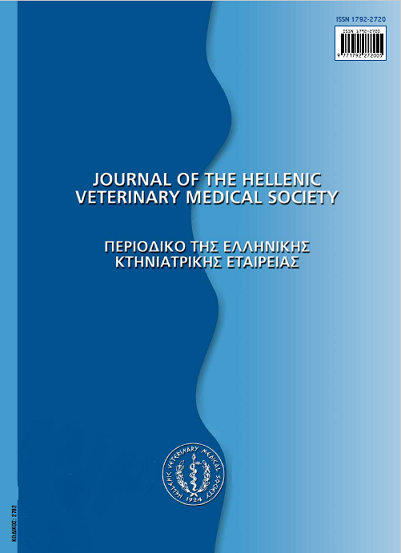Τα Δ-διμερή ως διαγνωστικό μέσο θρομβοεμβολικών διαταραχών στο σκύλο

Περίληψη
Τα δ-διμερή είναι προϊόντα αποδόμησης του ινώδους (FDPs) που παράγονται με την επίδραση της πλασμίνης στα πολυμερή του ινώδους. Αποτελούν έτσι δείκτες της δραστηριότητας της θρομβίνης και της πλασμίνης και, επομένως, τηςινωδόλυσης. Ειδικότερα, τα δ-διμερή είναι ένα από τα προϊόντα αποδόμησης των πολυμερών του ινώδους που έχουν υποστείδιασταυρούμενη ανασύνδεση. Κατά τη δευτερογενή, ενδογενή ή εξωγενή αιμόσταση, ενεργοποιείται ο παράγοντας Χ της πήξης του αίματος. Μέσω αυτού γίνεται η μετατροπή του παράγοντα II σε Πα, ο οποίος με τη σειρά του συμμετέχει στη μετατροπή του ινωδογόνου σε μονομερή του ινώδους (τα οποία πολυμερίζονται) και του παράγοντα XIII σε ΧΙΙΙα. Οπαράγοντας ΧΙΙΙα προκαλεί διασταυρούμενη σύνδεση των μονομερών του ινώδους, δημιουργώντας μεγαλύτερες και ισχυρότερεςίνες ινώδους. Κατά την ινωδόλυση, στη συνέχεια, δημιουργούνται τα FDPs, ένα από τα οποία είναι και τα δ-διμερή, που προέρχονται αποκλειστικά από τα διασταυρούμενα μονομερή του ινώδους, συνδέοντας έτσι την ανίχνευση τους με ενεργή πήξη -ινωδόλυση. Τα δ-διμερή έχουν μεγαλύτερη ευαισθησία στη διάγνωση του Συνδρόμου Διάσπαρτης Ενδοαγγειακής Πήξης (ΣΔΕΠ) σε σύγκριση με τα FDPs, καθώς ανιχνεύουν τόσο την ύπαρξη πρόσφατα σχηματισμένου θρόμβου, όσο και τηνταυτόχρονη αποδόμησή του. Στην Ιατρική, η ποσοτική ανίχνευση των δ-διμερών χρησιμοποιείται κυρίως για την έγκαιρη διάγνωση της θρομβοεμβολής και του ΣΔΕΠ, καθώς και στην αξιολόγηση της αντιθρομβωτικής θεραπείας. Αντίστοιχεςπαθολογικές καταστάσεις έχουν διαπιστωθεί και στο σκύλο, στη διερεύνηση των οποίων θα μπορούσε ενδεχομένως να συμβάλει οπροσδιορισμός των δ-διμερών. Η διάγνωση του ΣΔΕΠ στο στάδιο της υπερπηκτικότητας είναι δύσκολη επειδή τα συμπτώματα δενείναι ειδικά, γεγονός που καθυστερεί την έναρξη της αντιθρομβωτικής θεραπείας, με επακόλουθο την αυξημένη θνησιμότητα. Στοσκύλο, η μέτρηση των δ-διμερών φαίνεται ότι μπορεί να συμβάλει ουσιαστικά στη διάγνωση της θρομβοεμβολής και του ΣΔΕΠ,επειδή η συγκέντρωση τους αυξάνει σημαντικά και στις δύο αυτές παθολογικές καταστάσεις. Για τον προσδιορισμό των δ-διμερώνστο αίμα του σκύλου χρησιμοποιείται η μεθοδολογία που εφαρμοζόταν αρχικά στον άνθρωπο και, συγκεκριμένα, η ανοσοενζυμικήμέθοδος ELISA, η ανοσοφωταύγεια και η συγκόλληση. Οι μέθοδοι αυτοί έχουν αξιολογηθεί ως προς την ευαισθησία και τηνειδικότητα τους στο σκύλο.
Λεπτομέρειες άρθρου
- Πώς να δημιουργήσετε Αναφορές
-
GIANNOULOPOULOS (Γ.Δ. ΓΙΑΝΝΟΥΛΟΠΟΥΛΟΣ) G. D., ATHANASIOU (Λ.Β. ΑΘΑΝΑΣΙΟΥ) L. V., & POLIZOPOULOU (Ζ.Σ. ΠΟΛΥΖΟΠΟΥΛΟΥ) Z. S. (2017). Τα Δ-διμερή ως διαγνωστικό μέσο θρομβοεμβολικών διαταραχών στο σκύλο. Περιοδικό της Ελληνικής Κτηνιατρικής Εταιρείας, 61(1), 49–56. https://doi.org/10.12681/jhvms.14876
- Τεύχος
- Τόμ. 61 Αρ. 1 (2010)
- Ενότητα
- Review Articles
Οι συγγραφείς των άρθρων που δημοσιεύονται στο περιοδικό διατηρούν τα δικαιώματα πνευματικής ιδιοκτησίας επί των άρθρων τους, δίνοντας στο περιοδικό το δικαίωμα της πρώτης δημοσίευσης.
Άρθρα που δημοσιεύονται στο περιοδικό διατίθενται με άδεια Creative Commons 4.0 Non Commercial και σύμφωνα με την άδεια μπορούν να χρησιμοποιούνται ελεύθερα, με αναφορά στο/στη συγγραφέα και στην πρώτη δημοσίευση για μη κερδοσκοπικούς σκοπούς.
Οι συγγραφείς μπορούν να καταθέσουν το άρθρο σε ιδρυματικό ή άλλο αποθετήριο ή/και να το δημοσιεύσουν σε άλλη έκδοση, με υποχρεωτική την αναφορά πρώτης δημοσίευσης στο J Hellenic Vet Med Soc
Οι συγγραφείς ενθαρρύνονται να καταθέσουν σε αποθετήριο ή να δημοσιεύσουν την εργασία τους στο διαδίκτυο πριν ή κατά τη διαδικασία υποβολής και αξιολόγησής της.








